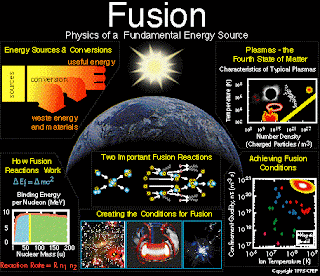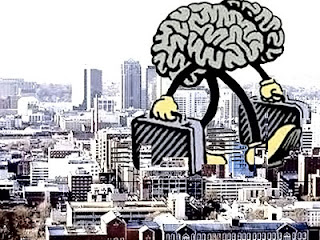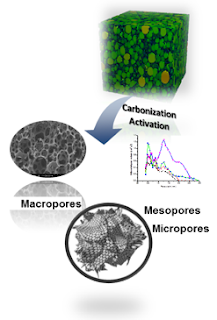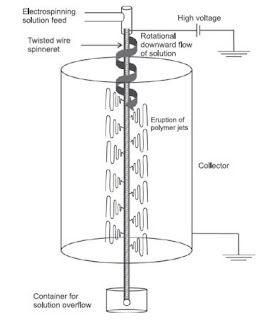I know that by now all of you are wondering what in the world is the return? Well let me tell you: The Return is the an official announcement of the SECOND book in the Elemental series: the sequel to 2015's Legend of the Orange Scepter. That's right people. Check it out HERE!
Featured Posts (3520)
NIST researchers applied a special form of microwave light to cool a microscopic aluminum drum to an energy level below the generally accepted limit, to just one fifth of a single quantum of energy. Having a diameter of 20 micrometers and a thickness of 100 nanometers, the drum beat 10 million times per second while its range of motion fell to nearly zero.
Credit: Teufel/NIST
Topics: Metamaterials, Nanotechnology, Quantum Computer, Quantum Mechanics
Physicists at the National Institute of Standards and Technology (NIST) have cooled a mechanical object to a temperature lower than previously thought possible, below the so-called “quantum limit.”
The new NIST theory and experiments, described in the Jan. 12, 2017, issue of Nature, showed that a microscopic mechanical drum—a vibrating aluminum membrane—could be cooled to less than one-fifth of a single quantum, or packet of energy, lower than ordinarily predicted by quantum physics. The new technique theoretically could be used to cool objects to absolute zero, the temperature at which matter is devoid of nearly all energy and motion, NIST scientists said.
“The colder you can get the drum, the better it is for any application,” said NIST physicist John Teufel, who led the experiment. “Sensors would become more sensitive. You can store information longer. If you were using it in a quantum computer, then you would compute without distortion, and you would actually get the answer you want.”
NIST Physicists ‘Squeeze’ Light to Cool Microscopic Drum Below Quantum Limit
Laura Ost
 |
| Image Source: Binus University Research Interest Group |
Topics: Alternative Energy, Nuclear Fusion, Nuclear Physics, Nuclear Power
Abstract
Introduction
RD Springer: Fusion Breeding for Mid-Century Sustainable Power, Wallace Manheimer
 |
| Image Source: Wiki Gender |
Topics: Existentialism, Politics, Science, Research
A survey of more than 1,000 UK-based university staff suggests that the country’s vote to leave the European Union could drive an academic exodus.
Forty-two per cent of lecturers and professors surveyed say they are more likely to consider leaving the UK higher-education sector as a result of the referendum outcome. The proportion was even greater (76%) among the non-UK EU citizens in the survey, commissioned by the University and College Union, which represents tens of thousands of academics and is based in London.
Many individual foreign researchers have said they feel less welcome in Britain after the Brexit vote, or that they now see better opportunities abroad. But the latest poll is one of the clearest indications of the widespread nature of this feeling in UK academia.
Scientific American: Brexit May Spark British Brain Drain, Daniel Cressey
I guess life does come full circle, I haven't been on here in a long time. I have started tweeting up under the name @blerdsunite and I will be launching a group on FB soon followed by the website. On twitter what i'm basically doing is highlighting a lot of different black artist, authors, illustrators, graphic designers, musicians, scientists etc. Instead of focusing on the standard Blerd topics which cover a lot of the mainstream I try to include all, but "us" in particular. Check me out, i'm finally back!!!
Topics: Asteroids, NASA, Planetary Science, Space Exploration
NASA will embark on two missions it says could unlock secrets to how our solar system was formed.
The Lucy and Psyche missions — both robotic, unmanned endeavors controlled from Earth — will take us back to the time 10 million years after the sun was born.
Lucy will visit the Trojan asteroids of Jupiter when it launches in October 2021. Scientists suspect the asteroids, currently caught in the largest planet's 12-year orbit around the sun, may have existed in the beginnings of the solar system and before Jupiter's orbit.
Lucy's principal investigator Harold F. Levison claims the mission will yield other-worldly insight into our universe.
"Because the Trojans are remnants of the primordial material that formed the outer planets, they hold vital clues to deciphering the history of the solar system," he explained. "Lucy, like the human fossil for which it is named, will revolutionize the understanding of our origins."
But don't wait up, Lucy's first stop won't come until 2025 when it arrives at a main belt asteroid. It will examine the Trojans from 2027 to 2033.
USA Today: NASA asteroid missions to discover secrets of the universe, Sean Rossman
 |
| Image Source: Madame Noire Taraji P. Henson (Katherine Johnson), Janelle Monae (Mary Jackson) and Octavia Spencer (Dorothy Vaughn) |
Topics: Diversity, Diversity in Science, NASA, STEM, Women in Science
Katherine Johnson, Dorothy Vaughn, and Mary Jackson are members of Alpha Kappa Alpha Sorority, Inc. The Iota Alpha Omega chapter have rented out the Poughkeepsie Galleria as a fundraiser for the sorority and general positive exposure to the public for the organization in general and African Americans in STEM in particular. I was proud to do an electronics STEM fair at the Children's Home of Poughkeepsie in 2014. I will proudly without as much effort support this tonight.
When you think of NASA and Black women, Mae Jemison no doubt comes to mind. But long before Jemison became the first African American woman to travel in space in 1992, there were three women of color already making history at the National Aeronautics and Space Administration, and now their story will finally be told in the upcoming theatrical release, Hidden Figures.
The movie, which stars Taraji P. Henson, Octavia Spencer, and Janelle Monae, tells the story of Katherine Johnson, Dorothy Vaughn, and Mary Jackson —”brilliant African-American women working at NASA, who served as the brains behind one of the greatest operations in history: the launch of astronaut John Glenn into orbit, a stunning achievement that restored the nation’s confidence, turned around the Space Race, and galvanized the world,” a press release relayed.
Madame Noire:
First Look At Hidden Figures, The Untold Story Of NASA’s Black Female Leaders
Brande Victorian
https://youtu.be/RcWXAzISZFU
Topics: Particle Physics, Quantum Mechanics, Theoretical Physics
Whether attempting to crack the mystery of high-temperature superconductors or describe a cloud of ultracold atoms, theorists face a similar question: What is the best way to model the behavior of many interacting quantum particles? Most models for such systems are extremely hard to solve analytically, or even simulate on a classical computer. In this context, models for one-dimensional (1D) systems are special because they have mathematical properties that often permit an exact mathematical solution. But even these solvable models aren’t ideal for describing real experiments, particularly those involving many out-of-thermal-equilibrium particles, like a cloud of atoms being released from a trap. A way to realize this description for a large class of widely used 1D models has now been reported in two independent papers, one by Olalla Castro-Alvaredo from the University of London, UK [1], and colleagues and the other by Bruno Bertini from the International School for Advanced Studies in Trieste, Italy, and colleagues [2].
A beautiful method of realizing quantum particles in a 1D setting is to confine ultracold atoms in an elongated (cigar-shaped) trap [3]. If the atoms are bosons, this system can be described by the 1D “delta Bose gas.” In this paradigmatic model, particles move solely along a line. They also mutually repel each other, but only when they are at exactly the same position, hence the “delta” in the model’s name. In the absence of an external trapping potential, this model is exactly solvable in the sense that the particles’ energy spectrum can be calculated [4].
APS Viewpoint: A More Efficient Way to Describe Interacting Quantum Particles in 1D
Jérôme Dubail, Institut Jean Lamour, CNRS and Université de Lorraine, Faculté des Sciences, Boulevard des Aiguillettes F-54506 Vandoeuvre-lès-Nancy, France
December 27, 2016• Physics 9, 153
 |
| A SpaceX Falcon 9 rocket blasts off from Cape Canaveral, Florida April 8, 2016 in this handout photo provided by SpaceX. REUTERS/SpaceX/Handout via Reuters |
Topics: Mars, NASA, Science Fiction, Space Exploration, Spaceflight
I invite you to watch the Mars series on National Geographic (trailer below). It appeals to me because all science fiction is speculative, but the series does a superb job of juxtaposition between what is being planned and discussed now and projecting how it might be carried out in the future. Part of our journey to other worlds as a space faring species will be in stuttered, baby steps until the profoundly difficult becomes routine.
Elon Musk’s SpaceX plans to resume flying rockets next week following an investigation into why one of them burst into flames on a launch pad four months ago, the company said on Monday.
In a statement, SpaceX said it expected to launch a Falcon 9 rocket from California's Vandenberg Air Force Base on Jan. 8 to put 10 satellites into orbit for Iridium Communications Inc.
SpaceX had suspended flights after the same model rocket went up in a blaze on Sept. 1 as it was being fueled for a routine pre-launch test in Florida.
The explosion at Cape Canaveral Air Force Station in Florida destroyed the $62 million rocket and a $200 million communications satellite.
Space X, owned and operated by Tesla Motors Inc. Chief Executive Officer Musk, has a backlog of more than 70 missions for NASA and commercial customers, worth more than $10 billion.
The company statement said that accident investigators concluded that a canister of helium inside the rocket’s upper-stage oxygen tank had exploded.
In the short term, SpaceX plans to revamp its fueling procedures so that the super-cold liquid oxygen will not build up between the helium tank’s liner and its outer covering, it added.
SpaceX said accumulation of oxygen in a void or buckle in the liner most likely led to the explosion.
Reuters Science: SpaceX aims for Jan. 8 return to flight with Falcon rocket
Reporting by Irene Klotz, Editing by W Simon
Phenol-urea-formaldehyde (PUF) organic foam were used as precusors for the new monolithic nitrogen-containing microporous cellular activated carbons production. Carbonization and CO2 activation were used to prepare this novel monolithic nitrogen-containing activated carbon foam with both interconnected macroporous and micro/meso- porosity structures from the developed PUF organic foam. The macroporosity corresponded to the connected network of cells with diameters ranging from 100 to 600 µm, and the pinholes in the cell walls had diameters ranging from 1 to 2 µm. The micro/mesoporosity is located at the inner surface of the cells. They can be used just like the classic activated carbon as an adsorbent, catalyst support, energy storage and biological material in various industries, but higher adsorption kinetics. Credit: World Scientific Publishing
Topics: Biology, Biochemistry, Biotechnology, Research
Researchers have developed monolithic, nitrogen-containing, microporous, cellular-activated carbon from phenol-urea-formaldehyde (PUF) organic foam for CO2 and H2 adsorption. The macroporosity corresponded to the connected network of cells with diameters ranging from 100 to 600 μm, and the pinholes in the cell walls had diameters ranging from 1 to 2 μm. The micro/mesoporosity is located at the inner surface of the cells.
Phys.org: Researchers produced nitrogen-doped, cellular-structure-activated carbon
More information: Weigang Zhao et al, Preparation and Characterization of Nitrogen-Containing Cellular Activated Carbon for CO and H Adsorption, Nano (2016). DOI: 10.1142/S1793292017500072
Topics: Commentary, Diversity, Physics, Politics, Research, Science
CEO Rush Holt was a congressional representative from New Jersey. Prior to that, he worked at the Princeton Plasma Physics Lab as a researcher. In his capacity as congressman, he had been one of the few members of our government that had a background in a STEM field. As I said before, sadly and poignantly now there are none.
I thought it appropriate as an end-of-year post. It looks like Dr. Holt is trying to rally the troops (if you're reading this, "us"). Don't be discouraged; don't stop pursuing your dreams. Our love and pursuit of STEM - and I'll include STEAM for artists - is more important now than ever. The future of humanity may well depend upon it.
His encouraging words speak for themselves at the link below.
“If we are not ashamed to think it, we should not be ashamed to say it.” Marcus Tullius Cicero
"In a time of universal deceit - telling the truth is a revolutionary act." Unknown
In the wake of the presidential election, AAAS CEO Rush Holt acknowledged the concerns of young scientists and engineers in an op-ed calling on them to “Speak up, keep calm and carry on.”
Early-career scientists and engineers may be understandably apprehensive about change in Washington, particularly since “attention to science during the presidential campaign was neither appreciable nor appreciative,” wrote Holt for Motherboard. Still, he urged the next-generation of innovators not to despair.
“Science has faced challenges throughout history, from one administration to the next, but year in and year out it has led to human progress, enriching our culture by improving quality of life and human knowledge about our place in the universe,” Holt wrote.
AAAS CEO to Young Scientists: “Speak Up. Keep Focused. Carry On.”
Ginger Pinholster
| Images Sources: See link below |
Topics: Atomic Force Microscopy, Nanotechnology, NEMS, NIST, Thin Films
Scientists at the National Institute of Standards and Technology (NIST) have developed a new device that measures the motion of super-tiny particles traversing distances almost unimaginably small—shorter than the diameter of a hydrogen atom, or less than one-millionth the width of a human hair. Not only can the handheld device sense the atomic-scale motion of its tiny parts with unprecedented precision, but the researchers have devised a method to mass produce the highly sensitive measuring tool.
It’s relatively easy to measure small movements of large objects but much more difficult when the moving parts are on the scale of nanometers, or billionths of a meter. The ability to accurately measure tiny displacements of microscopic bodies has applications in sensing trace amounts of hazardous biological or chemical agents, perfecting the movement of miniature robots, accurately deploying airbags and detecting extremely weak sound waves traveling through thin films.
NIST physicists Brian Roxworthy and Vladimir Aksyuk describe their work (link is external) in the Dec. 6, 2016, Nature Communications.
The researchers measured subatomic-scale motion in a gold nanoparticle. They did this by engineering a small air gap, about 15 nanometers in width, between the gold nanoparticle and a gold sheet. This gap is so small that laser light cannot penetrate it.
However, the light energized surface plasmons—the collective, wave-like motion of groups of electrons confined to travel along the boundary between the gold surface and the air.
The researchers exploited the light’s wavelength, the distance between successive peaks of the light wave. With the right choice of wavelength, or equivalently, its frequency, the laser light causes plasmons of a particular frequency to oscillate back and forth, or resonate, along the gap, like the reverberations of a plucked guitar string. Meanwhile, as the nanoparticle moves, it changes the width of the gap and, like tuning a guitar string, changes the frequency at which the plasmons resonate.
Topics: Materials Science, Metamaterials, Nanotechnology
Electrospinning works by ejecting liquid through a needle at the end of a cone. By applying an electric field, interaction between the charges in the liquid and the field provides the tensile force that would be exerted by spindles and reels in conventional spinning. Meanwhile the surface tension of the liquid – if it is sufficient – stops the ejected liquid breaking up into droplets. The result is long, extremely narrow fibres. While the textile industry has used the process since the 1930s, its potential for producing fibres with nanoscale diameters only came to light in the 1990s.
Like any other spun yarn, electrospun nanofibres can be woven, and the resulting nanoporous fabric can have huge advantages. Porous materials allow diffusion of molecules – useful for a number of applications, among them drug delivery. In 2006 Pattama Taepaiboon, Uracha Rungsardthong and Pitt Supaphol in Thailand were first to publish on the potential of electrospun hydrogel polymers for drug delivery through the skin. Their study of drug-loaded poly(vinyl alcohol) (PVA) electrospun mats not only showed that the chemical integrity of the drugs was unimpeded by electrospinning, but provided insights into the effect of drug solubility on the morphology of mat formed, as well as on the drug release characteristics. Ten years later use of electrospun mats for drug delivery remains a hot topic of research.
Nanotechweb: Electrospinning forms a common thread in new technologies Anna Demming
 |
| Image Source: Link Below |
Topics: Bell's Theorem, Quantum Mechanics, Theoretical Physics, Thermodynamics
John Stewart Bell’s famous theorem is a statement about the nature of any theory whose predictions are compatible with those of quantum mechanics: If the theory is governed by hidden variables, unknown parameters that determine the results of measurements, it must also admit action at a distance. Now an international collaboration led by Adán Cabello has invoked a fundamental thermodynamics result, the Landauer erasure principle, to show that systems in hidden-variable theories must have an infinite memory to be compatible with quantum mechanics.
In quantum mechanics, measurements made at an experimenter’s whim cause a system to change its state; for a two-state electron system, for example, that change can be from spin up in the z-direction to spin down in the x-direction. Because of those changes, a system with hidden variables has to have a memory so that it knows how to respond to a series of measurements; if that memory is finite, it can serve only for a limited time. As an experimenter keeps making observations, the system must eventually update its memory, and according to the Landauer principle, the erasure of information associated with that update generates heat. (See the article by Eric Lutz and Sergio Ciliberto, Physics Today, September 2015, page 30.) In the electron example, if all spin measurements must be made along the x– or z-axis, each measurement dissipates a minimum amount of heat roughly equal to Boltzmann’s constant times the temperature. Cabello and colleagues show, however, that if an experimenter is free to make spin measurements anywhere in the xz-plane, the heat generated per measurement is unbounded—obviously, an unphysical result.
Physics Today: Thermodynamics constrains interpretations of quantum mechanics
Steven K. Blau
| Alexander Hamilton: Portrait and Lin-Manuel Miranda |
Topics: Commentary, Existentialism, Politics
I will let Mr. Hamilton speak for himself (excerpt from paragraphs 5 and 8)...
Nothing was more to be desired than that every practicable obstacle should be opposed to cabal, intrigue, and corruption. These most deadly adversaries of republican government might naturally have been expected to make their approaches from more than one quarter, but chiefly from the desire in foreign powers to gain an improper ascendant in our councils. How could they better gratify this, than by raising a creature of their own to the chief magistracy of the Union? But the convention have guarded against all danger of this sort, with the most provident and judicious attention. They have not made the appointment of the President to depend on any preexisting bodies of men, who might be tampered with beforehand to prostitute their votes; but they have referred it in the first instance to an immediate act of the people of America, to be exerted in the choice of persons for the temporary and sole purpose of making the appointment. And they have excluded from eligibility to this trust, all those who from situation might be suspected of too great devotion to the President in office. No senator, representative, or other person holding a place of trust or profit under the United States, can be of the numbers of the electors. Thus without corrupting the body of the people, the immediate agents in the election will at least enter upon the task free from any sinister bias. Their transient existence, and their detached situation, already taken notice of, afford a satisfactory prospect of their continuing so, to the conclusion of it. The business of corruption, when it is to embrace so considerable a number of men, requires time as well as means. Nor would it be found easy suddenly to embark them, dispersed as they would be over thirteen States, in any combinations founded upon motives, which though they could not properly be denominated corrupt, might yet be of a nature to mislead them from their duty.
The process of election affords a moral certainty, that the office of President will never fall to the lot of any man who is not in an eminent degree endowed with the requisite qualifications. Talents for low intrigue, and the little arts of popularity, may alone suffice to elevate a man to the first honors in a single State; but it will require other talents, and a different kind of merit, to establish him in the esteem and confidence of the whole Union, or of so considerable a portion of it as would be necessary to make him a successful candidate for the distinguished office of President of the United States. It will not be too strong to say, that there will be a constant probability of seeing the station filled by characters pre-eminent for ability and virtue. And this will be thought no inconsiderable recommendation of the Constitution, by those who are able to estimate the share which the executive in every government must necessarily have in its good or ill administration. Though we cannot acquiesce in the political heresy of the poet who says: "For forms of government let fools contest That which is best administered is best,'' yet we may safely pronounce, that the true test of a good government is its aptitude and tendency to produce a good administration.
Yale Law School: Federalist Papers: No. 68
I've made a new website to share my Spec Fic webserials and short fiction. Register at specfics.com and Comment on stories for a chance to win a $25 Amazon Gift Card! Click to Learn More.
 |
| Clean Technica: Tesla "Competitors Like Deer In The Headlights" |
Topics: Commentary, Existentialism, Politics
Since it's the holiday season, I am dragged by my better half to two back-to-back parties.
Invariably, two things will happen without fail: 1) someone will ask me what I do; 2) I'll tell them. It's better to keep it simple: "I make the chips that go in your I-phone" or something like that. I usually get excited and go into way too much detail. It reminds me of the blank stares I got in the Air Force (of all places) when one of my fellow officers asked me about physics. If they're honest, they'll say something to the effect of "I don't understand a thing you just said" and laugh nervously, finding other conversations to their suit, or as I learned in the AF, I'll change the subject to sports.
Unfortunately in the instant, I have no idea when what I've answered is at all political.
In an off comment due to the cold weather (18 degrees at the time), someone quipped about "wanting global warming."
I commented that the physics is a little more complicated than that, and proceeded to explain it in a cursory fashion. I mentioned the surface area of the Arctic pole reflecting heat and light into space. I didn't go in much detail about the massive amount of peer reviewed research, and made what I thought was a humorous joke: "when we're the Sahara desert, we're (humans) kinda screwed."
Science despite its claim to dispassionate aloof distance is political, but it shouldn't necessarily be so. Belief and "purity" have become the zeitgeist; decades of conspiracy theory and the de-legitimization of expertise at all levels has affected our relationship with traditional forms of reliable information and what used to be called "truth, the whole truth and nothing BUT the truth."
It saddens me that in order to be civil, we must "tip-toe" and be sensitive to another's view.
But...what if your understanding is wrong? Should we allow incorrect understanding to fester until it becomes a belief system, usually impenetrable by quaint things like "facts"?
The world is a lot more complicated, and it's imperative that we as a species get a little more acumen in the massive technology that surrounds us.
"We live in a society exquisitely dependent on science and technology, in which hardly anyone knows anything about science and technology." Carl Sagan
The societal equivalent of choosing ignorance over information is illustrated above; the headlights being a future we're not prepared for, despite its inexorable coming.
Topics: Electrical Engineering, NIST, Quantum Mechanics, Research, Science
Metrologists are conservative by nature, knowing that the premature adoption of a new measurement standard could lead to confusion in both science and commerce. So it is a big deal that the International System of Units (SI) is poised to undergo its first major overhaul since its birth in 1960. Two years from now at the General Conference on Weights and Measures in Paris, officials will adopt a new SI in which every unit can be obtained from fixed values of several fundamental constants [1]. All eyes are on the kilogram, which will no longer be defined by the mass of a cylinder of platinum-iridium alloy that has been kept in a Parisian vault since it was fabricated in 1889. Somewhat overlooked, however, are advances in standards for electrical resistance and voltage, without which the new SI would not be possible. A new report [2] from Wilfrid Poirier and colleagues at France’s metrology and testing laboratory, LNE, puts these electrical standards in the spotlight by combining them to create a current source based on the electron charge e (as opposed to Ampère’s law). The source, which has an unprecedentedly low uncertainty, will enable current calibrations that are consistent with the redefined SI and boost efforts to close the so-called quantum metrology triangle [3].
The new current source is essentially a quantum realization of Ohm’s law, I=V∕R, where I is current, V is voltage, and R is resistance. The electron charge e enters because V and R are each provided by a quantum electrical device whose outputs involve e [4]. The voltage source is an array of nJ superconducting Josephson junctions, which, when driven by microwaves at frequency fJ, produces a voltage VJ=nJfJ(h∕2e)VJ=nJfJ(h∕2e), where h is the Planck constant. The resistance comes from a two-dimensional electron gas that is placed in its ith quantum Hall state by a large magnetic field, in which it has a Hall resistance RH=(h∕e2)∕i. Ohm’s law for the quantum current then becomes IQ=(nJfJi∕2)e. Since nJ and i are known exactly and the uncertainty of fJ is negligibly small, the uncertainty of IQ is limited by such seemingly little things as the “lead resistance” contributed by connecting wires and various sources of random noise.
These technical details are, however, the crux of why it’s challenging to make a high-precision quantum current source. To understand the problem, consider a simplified diagram of the device (Fig. 1). Here, a Josephson voltage source connects directly to a conventional resistor whose resistance can be calibrated in terms of the quantum Hall resistance. The output of this circuit is then fed into a conventional current amplifier that provides a variable amount of gain. (An adjustable current for practical calibrations can thereby be achieved by varying the gain and/or the voltage source.) This circuit has two big problems when it comes to producing currents with relative uncertainties below one part in a million. First, the resistance of the leads increases the circuit’s effective resistance by an amount that cannot be determined with high enough accuracy. Second, the gain of even the best conventional amplifier is not sufficiently stable. Poirier and colleagues’ tour de force achievement is realizing a circuit (Fig. 2) that overcomes both hurdles simultaneously.
APS Physics Viewpoint: A New Era for the Ampere
Mark W. Keller, Quantum Electromagnetics Division, National Institute of Standards and Technology, 325 Broadway, Boulder, CO 80305, USA
José Aumentado, Applied Physics Division, National Institute of Standards and Technology, 325 Broadway, Boulder, CO 80305, USA
VoCo allows you to change words in a voiceover simply by typing new words. Presented live during the Adobe MAX 2016 Sneak Peeks.
In-spite of the OBVIOUS problems this can cause I may use this for some online podcast/ instructional video medium presentations I wish to do. OUTSTANDING! Cool to see Jordan Peele, the other half of "Key and Peele" involved in this.






